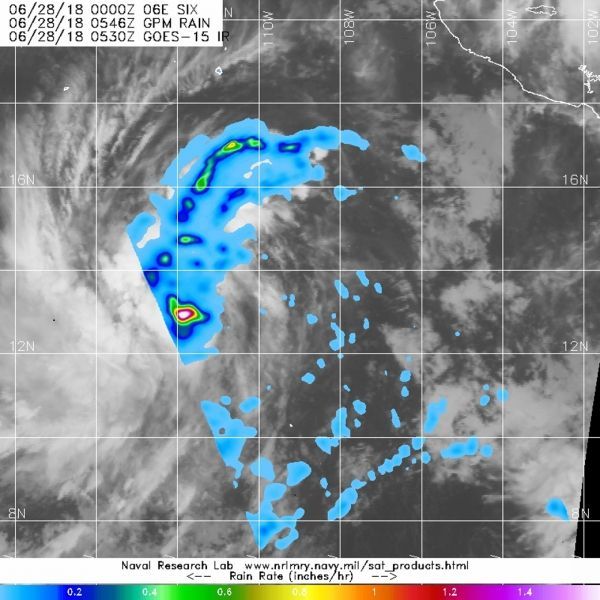The Global Precipitation Measurement mission or GPM core satellite passed over Tropical Depression Six-E in the Eastern Pacific Ocean and found heavy rainfall occurring in two areas. Shortly after GPM passed overhead, the depression strengthened into Tropical Storm Emilia.
Tropical Depression Six-E developed on June 27 at 5 p.m. EDT and strengthened into the fifth tropical storm of the Eastern Pacific Ocean season by 5 a.m. EDT on June 28.
The GPM core observatory satellite passed over Tropical Depression Six-E on June 28 at 1:30 a.m. EDT (0530 UTC) as it was strengthening into a tropical storm. Data collected by the GPM satellite's Microwave Imager (GMI) showed that powerful storms circling the center of the depression. Those storms were producing rainfall at a rate greater than 1.4 inches per hour. A Band of thunderstorms extending north of the center were also producing rainfall at greater than 1.4 inches per hour. GPM is a joint mission between NASA and the Japan Aerospace Exploration Agency, JAXA.
Read more at NASA / Goddard Space Flight Center
Image: The GPM core observatory satellite passed over Tropical Depression Six-E on June 28 at 1:30 a.m. EDT (0530 UTC) as it was strengthening into a tropical storm. Powerful storms circling the center of the depression and in a band extending north of center were producing rainfall at a rate greater than 1.4 inches per hour. GPM data was overlaid on NOAA's GOES-West satellite infrared imagery. CREDITS: NASA/JAXA/NRL


